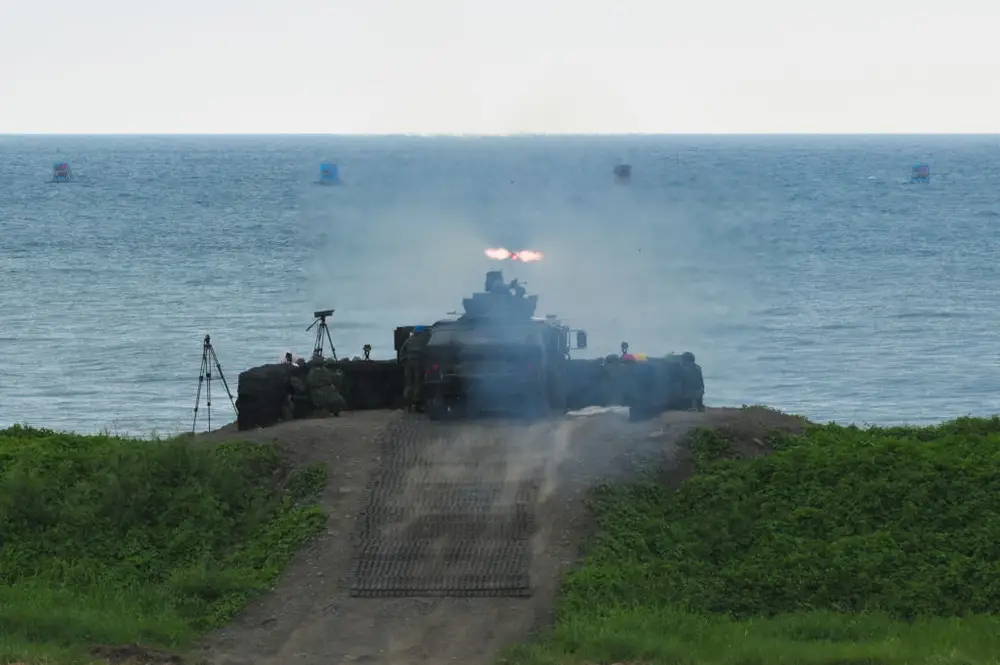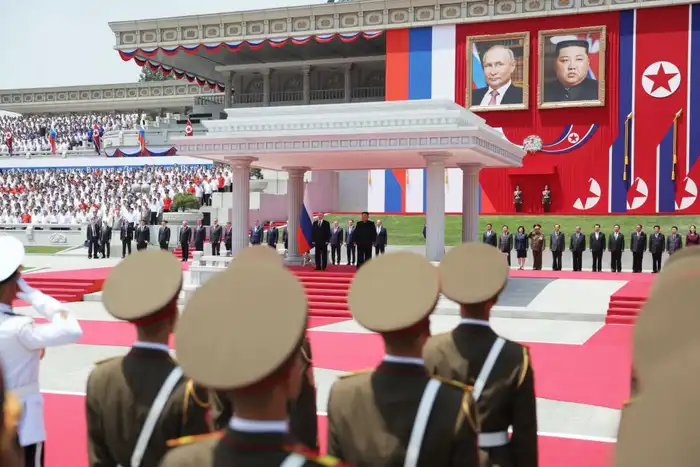The US can ‘ill afford’ another war now its rivals are teaming up so well, US general says

A US-made TOW-2A wire-guided anti-tank missile is launched by Taiwanese soldiers during a live fire exercise in August, 2024
The US Army’s outgoing top commander in the Pacific region has warned that the US can “ill afford” another war because its military is vastly overstretched.
According to Defense One, Gen. Charles Flynn said that the US’ authoritarian rivals — Russia, China, Iran, and North Korea — had been placing increasing pressure on American military resources.
Speaking at the AUSA conference in Washington DC last week, Flynn described the technology and military alliances between the authoritarian states as a “very dangerous combination.”
Collaboration between these countries has stepped up. Russia has received Shahed drones from Iran, which it has used to attack Ukrainian cities. It has also received diplomatic and economic backing from China, while North Korea has sent rockets and troops.
Russia’s returned the favor to Iran, helping it evade sanctions and to arm Iranian proxies Hezbollah and the Houthis.
In East Asia, Russia recently formed a military pact with North Korea, and has engaged in massive military drills alongside China as it menaces Taiwan with invasion.
“There’s a limited regional war going on in Europe,” Flynn said. “There’s a limited regional war going on in the Middle East. We can ill afford another limited regional war in Asia. Why? Because it will be a global problem for all of us.”
If war erupts between the US and China it could have devastating global economic consequences.
Bloomberg Economics in January estimated that a war could cost up to $10 trillion, which is around 10% of global GDP.
The Economic Observatory in March found that a broader conflict in the Middle East would spike oil prices and inflation, while if part of Ukraine is handed to Russia as part of a peace deal it would further disrupt food and oil markets.

North Korea’s Kim Jong Un and Russia’s Vladimir Putin at a military parade in Pyongyang in June.
Flynn is not the first to warn of the dangers posed by the new alliance of authoritarian powers.
In January, Kathryn Levantovscaia, deputy director of the Forward Defense program at the Atlantic Council, wrote that the US military is stretched thin amid threats in Europe, the Middle East, and East Asia.
“Pursuing regional stability in Europe and the Middle East simultaneously are critical and costly endeavors,” she said.
“Doing so at the current pace in light of capacity limitations could backfire and damage not only Ukraine but also NATO.
“At the same time, the United States lacks the requisite focus to take on a Chinese threat to Taiwan and to defend its Pacific position because the US military and defense industrial base are stretched thin.”
In October last year, Marines Lieutenant-General Stephen Sklenka, the deputy commander of all US forces in the Indo-Pacific, told the Sydney Morning Herald that the US’ growing number of military commitments could distract from its ability to counter China’s aggression.
“So far, we haven’t had any stuff taken out of this theatre. There is always the chance of what I refer to as a strategic distraction,” he told the publication.
The US military retained the capacity to fight two major wars simultaneously throughout the Cold War, but it shifted its stance in 2018 to be able to fight one major war while deterring a second adversary.
The plan was formed in response to China’s growing military might. Some critics are calling on the US to resume its “two-war” posture and say the current doctrine doesn’t account for the double threat posed by China and Russia, its two most powerful adversaries.
Raphael Cohen, an analyst with the RAND Corporation think tank, told B-17 last November that retaining the capacity to fight Russia and China at the same time would entail a huge boost in US military spending.
But the threats could be countered, he said, by strengthening the US’ alliances.
The problem of how to boost military spending amid global instability is a challenge governments around the world are facing.
Military budgets are increasing across the world, with the Stockholm International Peace Research Institute in May finding that US military budget in 2024 was $886 billion, an 8% increase over two years.
Levantovscaia estimated that the US needs an additional $300 billion in the annual defense budget directed toward revitalizing the US defense industrial base to help defend against global threats.
“In short, the United States faces a strategic choice. Its means are insufficient to achieve its ends,” she wrote.
“To close the gap, it must move one or the other.”






